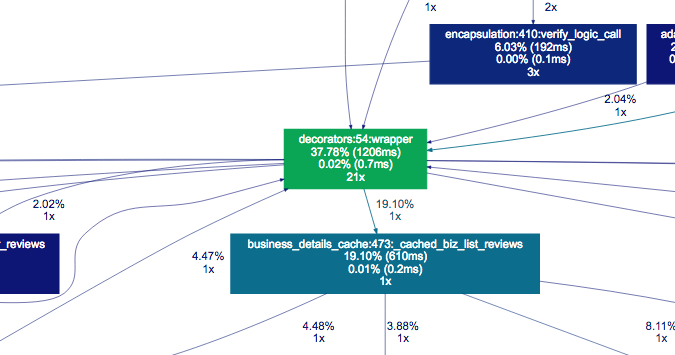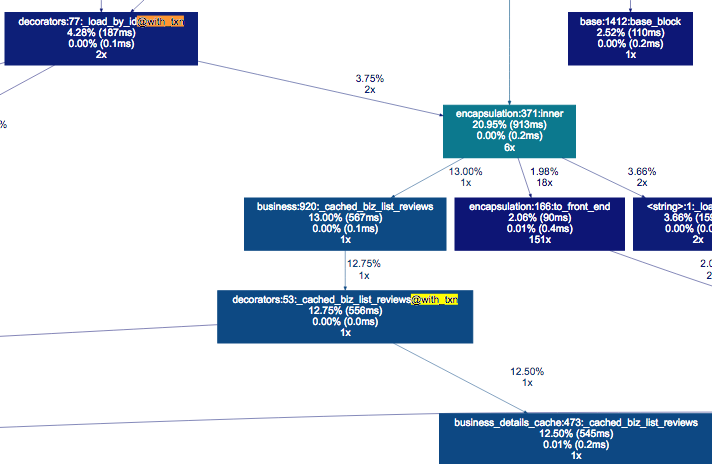named_decorator contains a utility function to dynamically rename a decorator
based on its callee (the function it wraps). This is useful especially in large
codebases with a few number of widely used decorators.
It's meant as a tool to fix situations like this one...
...and turn these convoluted profiles into more readable ones:
from named_decorator import wraps
def with_log_and_call(log_message):
def outer_wrapper(method):
@wraps(method, with_log_and_call)
def wrapper(*args, **kwargs):
print(log_message)
return method(*args, **kwargs)
return wrapper
return outer_wrapperYou can use the function form if a decorator doesn't suit you:
from named_decorator import named_decorator
def with_log_and_call(log_message):
def outer_wrapper(method):
def wrapper(*args, **kwargs):
print(log_message)
return method(*args, **kwargs)
return named_decorator(wrapper, method, with_log_and_call)
return outer_wrapperIn both examples, the wrapper function returned by the decorator will be renamed to
$CALLEE_NAME@with_log_and_call to prevent call trees from getting mixed up
together by a common "wrapper" node.
functool.wraps updates a function's __name__. However,
the function's code object also has a name (.func_code.co_name) and that is
what cProfile looks at when it traces calls.
Use Github's pull request and issues system. To run tests:
tox --skip-missing-interpreters
--skip-missing-interpreters allows you to skip missing interpreters.
Those are tested by Travis CI when you issue a pull request.

